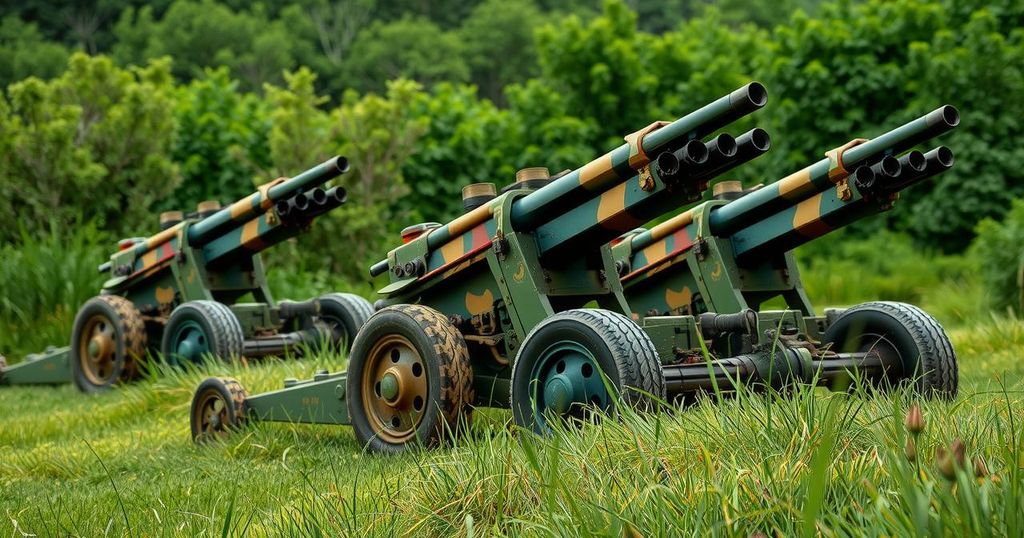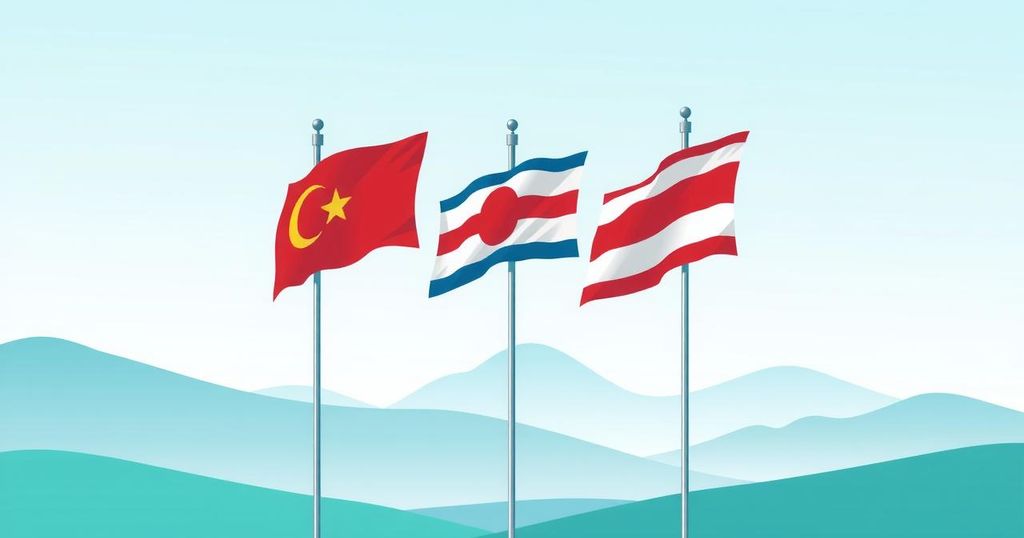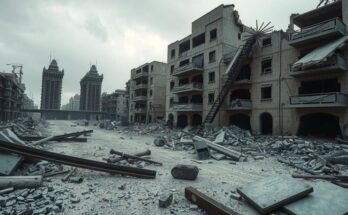Ukraine has reported hitting three North Korean artillery guns supplied to Russia, highlighting North Korea’s role in the conflict. The M-1978 Koksan howitzers, capable of striking targets 60 kilometers away, are being utilized by Russian forces. Approximately 12,000 North Korean troops are aiding Russia, with significant military cooperation observed between the two nations following a recent defense treaty.
Ukraine reported that it successfully targeted three long-range artillery guns provided to Russia by North Korea. This incident emphasizes North Korea’s significant role in supporting Russia’s military campaign against Ukraine, particularly during the conflict in Kursk. The Ukrainian military detailed that its 14th Separate Drone Regiment identified these hidden M-1978 howitzers and coordinated an attack using Ukrainian rocket artillery.
According to the military’s statement, the M-1978 Koksan artillery system, equipped with a 170mm gun, can strike targets up to 60 kilometers away. This artillery system, initially developed to threaten Seoul, is now being deployed by Russian forces in the Ukraine conflict to compensate for their artillery losses.
Reports indicate that approximately 12,000 North Korean soldiers are currently in Russia to assist in combating Ukrainian forces, which had recently captured territories in Kursk. Notably, neither North Korea nor Russia has publicly acknowledged the presence of these soldiers. Evidence suggests that North Korea is supplying arms to Russia, presumably to help compensate for its diminishing artillery capabilities.
In February, Ukraine claimed a strike on a North Korean howitzer in Luhansk, marking the first instance of a M-1978 Koksan being hit by Ukrainian drones. Furthermore, the Khortytsia group of forces reported sightings of North Korean military formations in Russia’s Tyumen region, demonstrating the heightened military cooperation between North Korea and Russia.
South Korea announced that North Korea had delivered about 7,000 weapon containers to Russia, with the total number reaching 20,000 within a two-month period. Recent accounts from Ukrainian officials confirmed that the influx of North Korean troops, coupled with Russia’s numerical superiority, has enabled them to regain control of Sudzha, Ukraine’s final stronghold in Kursk.
This reliance on North Korean support reflects Russia’s commitment to reclaim lost territories. Following the signing of a mutual defense agreement in June, North Korea and Russia have enhanced collaboration across various domains. Recent diplomatic visits by Russian officials to North Korea have underscored ongoing discussions concerning military cooperation amidst proposed ceasefire efforts.
The ongoing military collaboration between North Korea and Russia significantly influences the current conflict in Ukraine, as exemplified by the recent targeting of North Korean artillery systems. With thousands of North Korean troops reportedly aiding Russian forces, the Kremlin’s determination to recover lost territories is evident. This complex dynamic highlights the deepening relations and mutual defense strategies following the treaty signed in June, suggesting that these developments will continue to shape the landscape of the conflict.
Original Source: www.rfa.org




